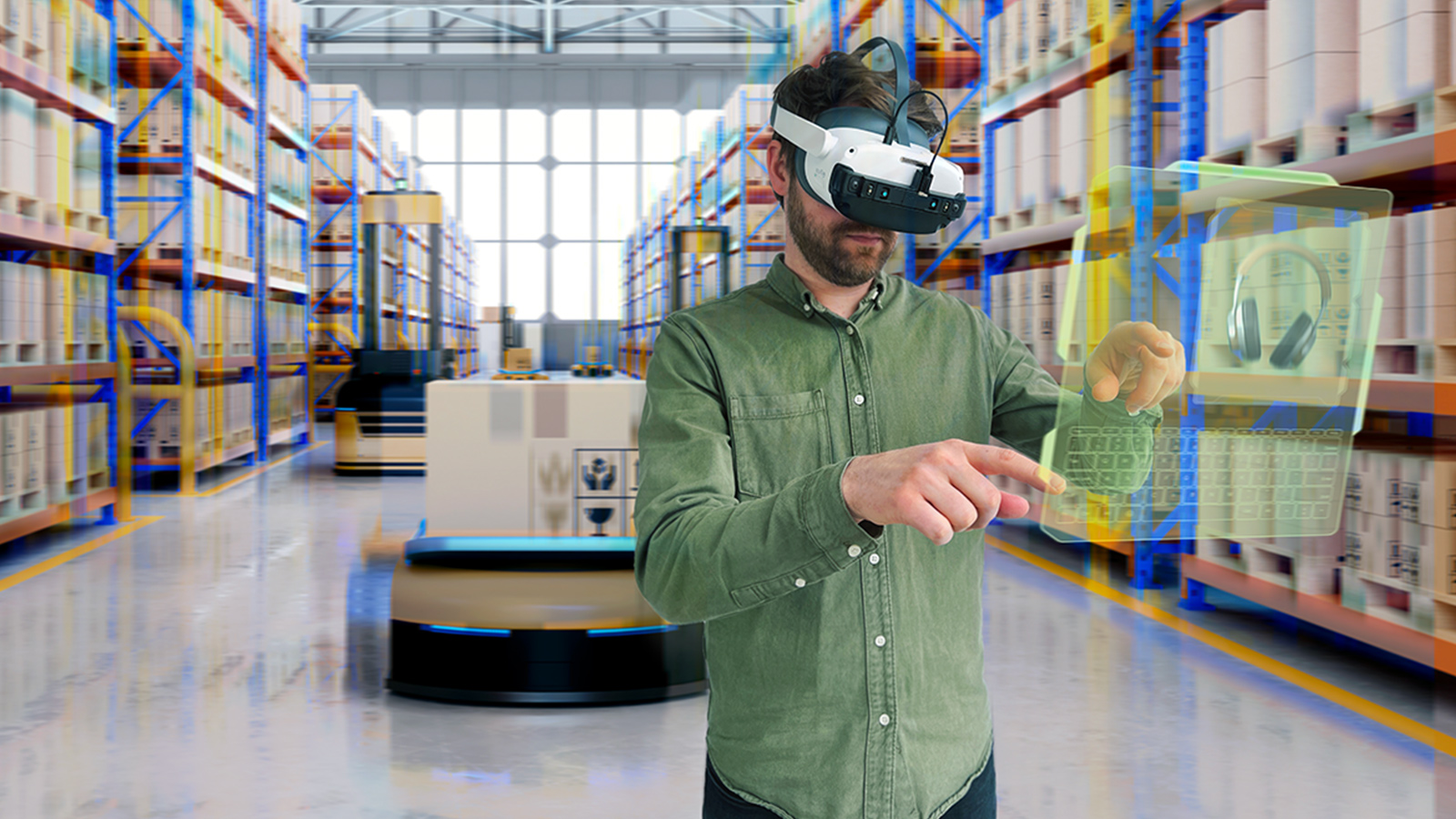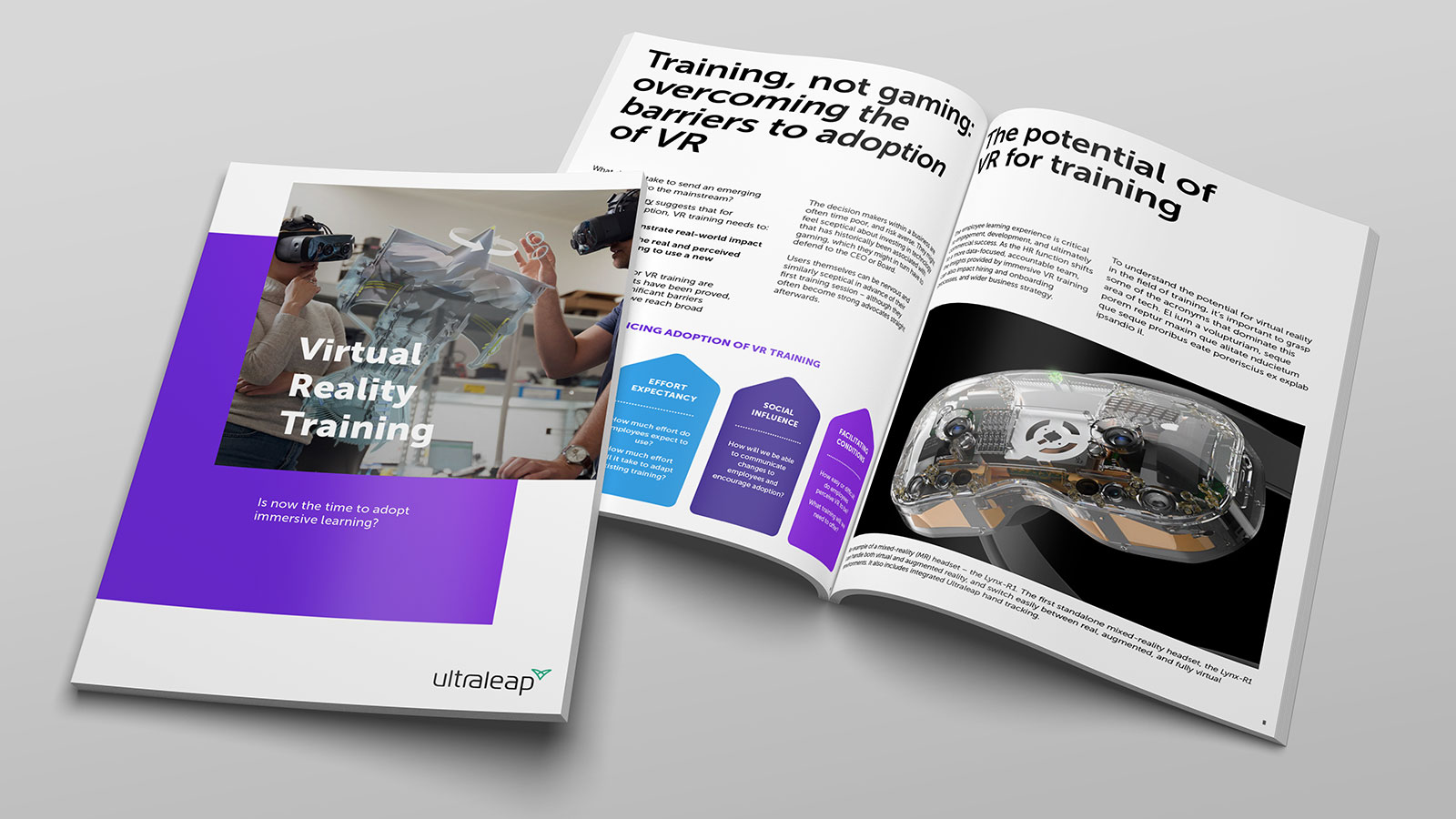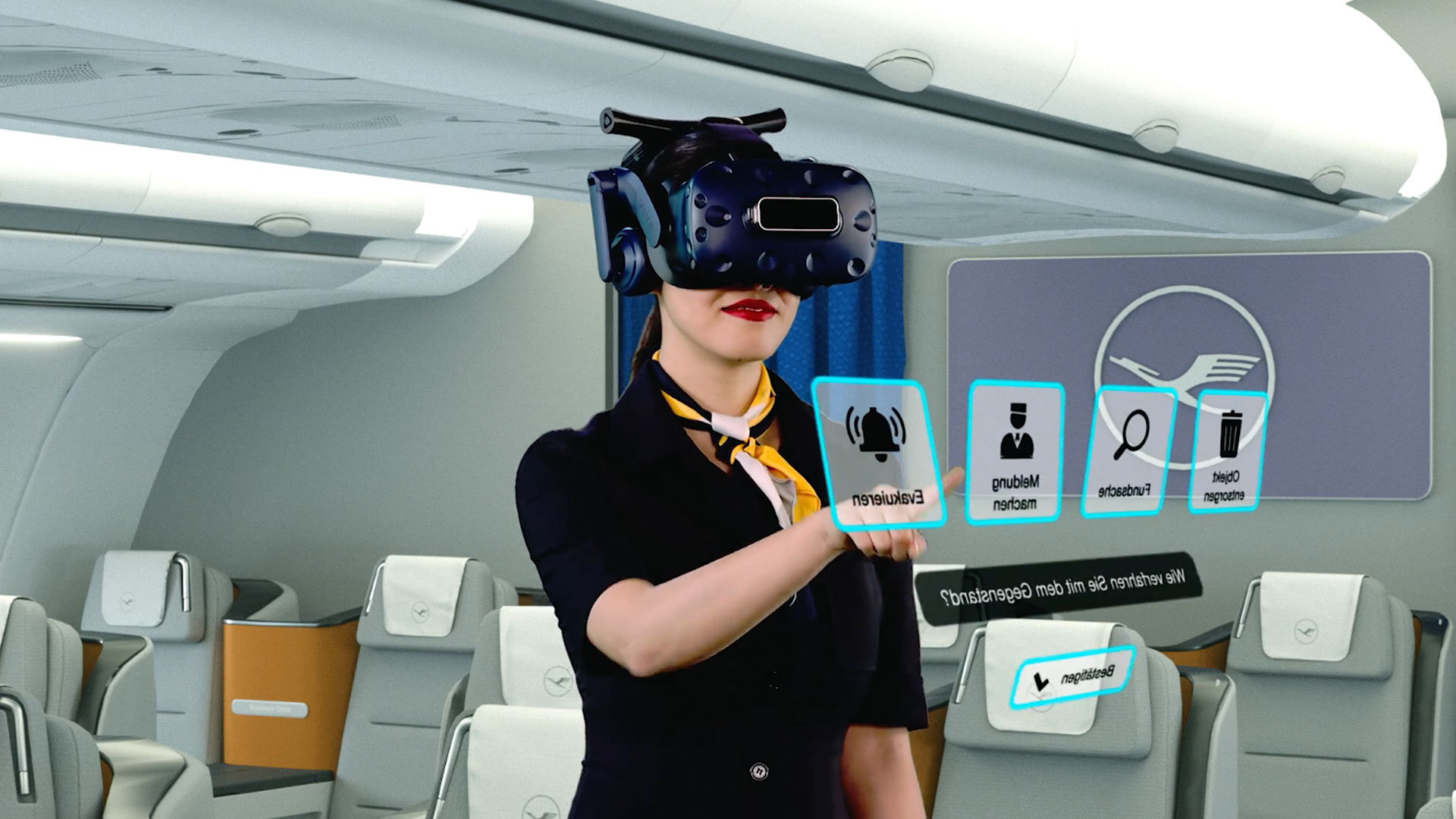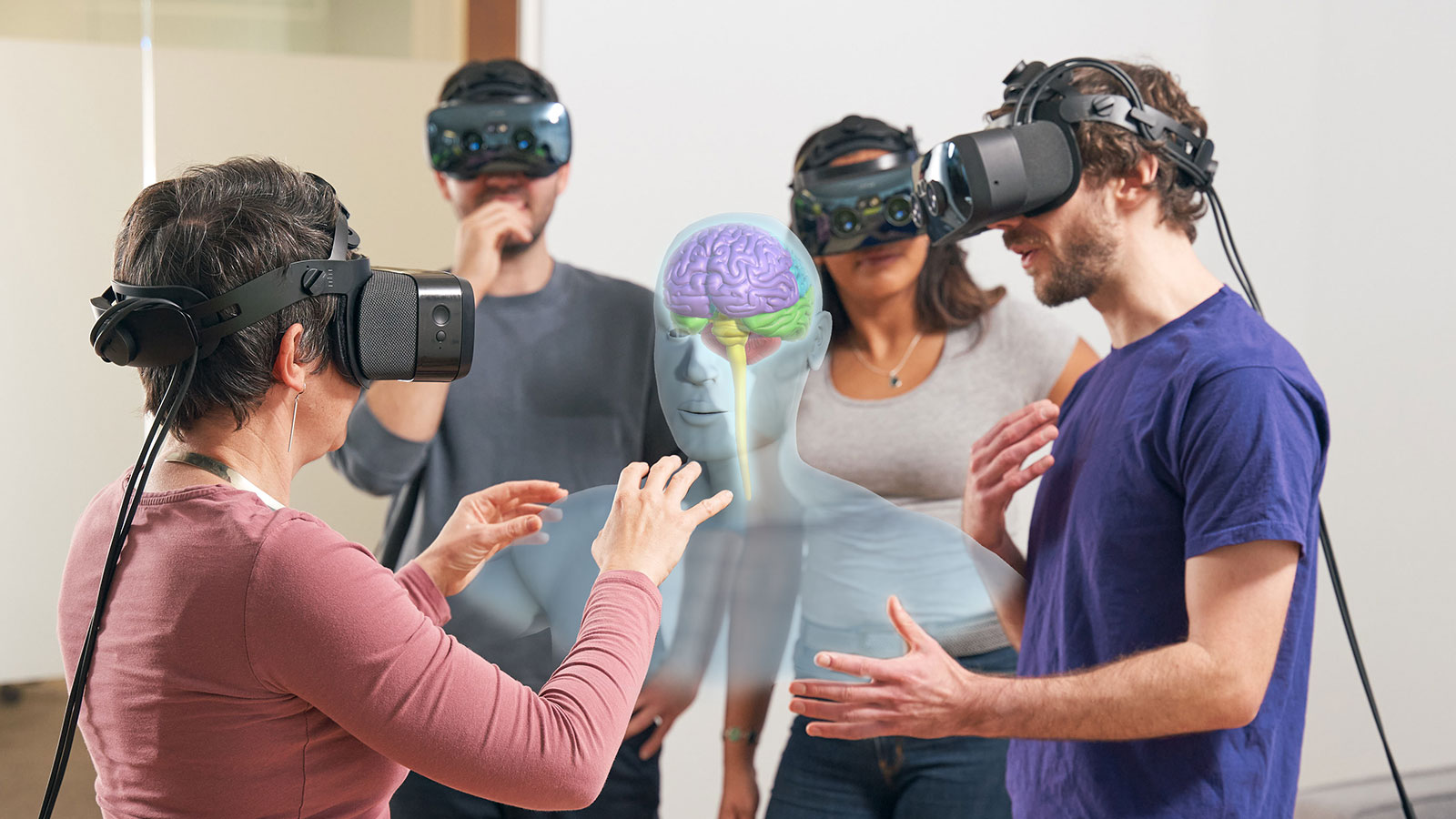
Taking VR for Training Mainstream
Posted; August 6, 2021
VR training is on the cusp of mainstream adoption. But VR controllers aren't for everyone, or every use case. Here's why hand tracking has an essential role to play in taking VR for training mainstream.
By Matt Tullis, VP of XR at Ultraleap
“When we show one of our experiences to someone, it’s often their first time ever using VR,” says Carrie Shaw of Embodied Labs. "We need to get them up and going as quickly as possible."
Embodied Labs’ award-winning VR training platform gives healthcare workers a first-person look inside living with common conditions that affect seniors – such as Alzheimer’s. “Using hand tracking instead of controllers," Carrie goes on to say, “is more realistic and lowers the learning curve. They can reach out and start engaging and interacting immediately.”
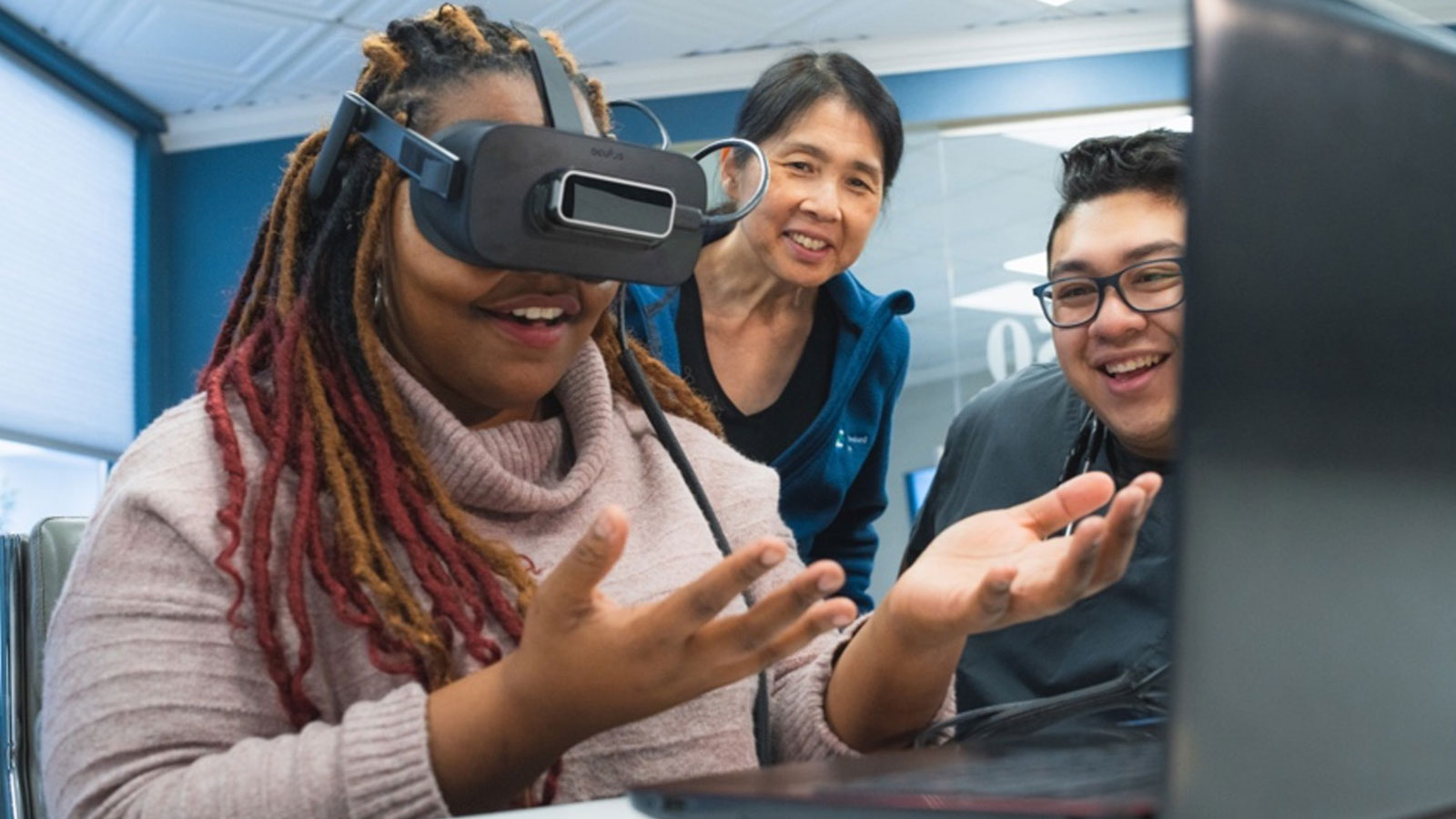
Immersive learning is proliferating. It’s already demonstrated significant early wins. And while how we interact in VR isn't the only factor influencing mainstream adoption, the example of Embodied Labs shows that it's far from trivial.
How we interact in VR affects training outcomes, reduces or increases the effort of adoption, and makes applications more or less accessible.
Today, most virtual reality training applications rely on controllers. But VR controllers were built for gaming – and there are fundamental differences between VR for gaming and VR for training.

The theory of technology adoption and training with VR
The theory of technology adoption tells us that mainstream adoption of immersive learning requires not just improvements to training outcomes (performance expectancy). We also have to overcome the effort of adopting VR (effort expectancy), and broaden appeal beyond tech early adopters to more diverse users (facilitating conditions).
Using hand tracking as an alternative to controllers positively influences multiple factors affecting the likelihood of adoption.

1. Effort expectancy – How hand tracking reduces friction in immersive learning
76% of Americans have never tried a VR headset. And for some industries the percentage of employees who’ve never used VR will be far higher. A GlobalWebIndex survey suggested 30% of men had used a VR headset, but only 16% of women. Positivity about VR is also clustered in younger age groups.
VR controllers were designed for dedicated gamers with time to spare. They weren't designed for inexperienced, technology-anxious users with limited time to learn button pushes. Supplementing or replacing them with hand tracking makes VR for training accessible to users of all ages and levels of technical competency.
2. Performance expectancy – How hand tracking enhances training outcomes in VR
VR controllers were designed to make immersive gaming enjoyable, not drive real-world behaviour change. But VR for training, unlike VR gaming, has as its end goal improving performance in real-world scenarios.
If you use VR controllers to train flight attendants to close overhead lockers, it builds muscle memory not of real-world actions, but of an abstract set of button pushes. In contrast, hand tracking enables flight attendants to perform actions closely mimicking those they would do in reality.
Find out more about Ultraleap’s solutions for building VR training applications
3. Facilitating conditions – How hand tracking reduces onboarding time
In any training scenario, onboarding time is lost time. Using hand tracking streamlines onboarding when training with VR.
Every user has a lifetime of familiarity interacting with physical objects using their hands. When virtual objects appear and behave similarly to physical counterparts, little or no instruction is required.
With a well-designed launcher powered by hand tracking, users can put on a headset and start interacting immediately. Objects look like they can be picked up, virtual buttons look like they need to be pushed. Any necessary instruction can be incorporated into the application itself, with little need for in-person support.
Enabling mainstream adoption of VR for training
Many pieces of the puzzle are falling into place to take VR for training mainstream. All-in-one headsets are a game-changer when it comes to ease of setup. The development of scalable enterprise content creation and management platforms (from the likes of Immerse.io, Holos.io, TXT Group and Strivr) is also key.
But to make immersive learning accessible for anyone, anywhere, and for any industry, we're going to have to move beyond the limitations of controllers built for gaming and towards more natural interaction.
Matt Tullis is the VP of XR at Ultraleap. He has almost 20 years of experience in the consumer electronics industry and has worked in the XR ecosystem at both Tobii and Immersion.

World-leading hand tracking for VR training
Explore our blogs, whitepapers and case studies to find out more.
